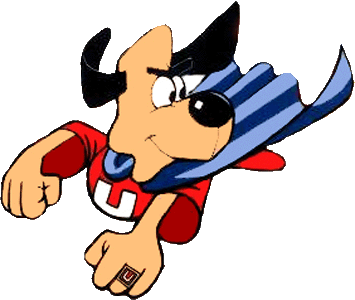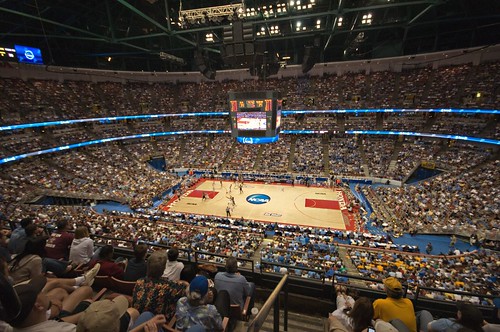 The world's governing body for soccer awarded the 2022 World Cup home site to Qatar on Thursday morning, drawing cheers from a Connecticut-sized country that will become the first nation in the Persian Gulf region to host the sport's biggest tournament. The cheers, due to the country's small population, were not loud enough to be heard by anyone in the area, but the people carried on nonetheless.
The world's governing body for soccer awarded the 2022 World Cup home site to Qatar on Thursday morning, drawing cheers from a Connecticut-sized country that will become the first nation in the Persian Gulf region to host the sport's biggest tournament. The cheers, due to the country's small population, were not loud enough to be heard by anyone in the area, but the people carried on nonetheless. "This is an enormous win for us," said Sheikh Hamad bin Khalifa Al-Thani, the country's emir. "We would be shouting from the tops of mountains if we had any."
Qatar, which won the committee's final vote 14-8 over the US, assuaged concerns about climate and crowd control by reasoning that their budget for the tournament would more than cover any health and safety measures that needed to be put in place to ensure a good experience for players and fans alike. Russia, which won the bid for the 2018, had similar justifications for its own ability to host; both countries rank in the top 3 in proven natural gas reserves, and the export of such resources remains the driving force behind each country's economy.
"It took a lot of convincing,'' Al-Thani admitted. "We were not sure that [FIFA's executive committee] would consider us a worthy candidate because of our small physical size, population and average summer temperature of 118 degrees Fahrenheit. But once we made the final round of voting, we knew that our financial capabilities were starting weigh heavily on their minds.''
"Yeah, they've got money," FIFA president Sepp Blatter said. "We like that. The decision to host this year's cup in South Africa was more sentimental than fiscal. We don't intend to go back any time soon if we can help it - the financial constrains are just too difficult to work through."
FIFA's announcement gave a huge boost to wealthy underdog countries that have hopes of hosting future tournaments. Luxembourg, Singapore and Hong Kong, all of which share with Qatar a top-15 worldwide ranking in per-capita GDP (purchasing power parity, 2009), were rumored to have already begun talks with the federation regarding hosting possibilities for post-2030 tournaments.
***
If your brain is half the size of a Jabulani, you've intuited by now that the above 300+ words were tongue-in-cheek satire (though the linked facts are real). The emotion, however, was legitimate, and I know there are many frustrated soccer fans across the country that would agree.
I'd be doing soccer fans a disservice if I counted myself among their ranks, but for one day this past May, I put myself in their shoes and walked into Lincoln Financial Field to watch the US take on Turkey in a pre-Cup friendly. The US won, 2-1, but even more than the win, what struck me was the atmosphere. You hear about it from people who have attended matches and you see the chaos on TV, but it's impossible to appreciate the feeling in the building unless you're actually there. Even when Turkey was winning, the fans were on their feet, smoke bombs going off now and again, beach balls surfing the crowd and chants resounding from section to section. There was as much noise and more passion in that stadium - for an exhibition, mind you - than you would find at any regular season NFL game. That level of excitement, coupled with watching Landon Donovan's improbable goal (props to Ian Darke on a masterful call), had me thinking "Hey, this is pretty fun!"
You can imagine, then, the disappointment I shared with millions of other American supporters when I heard FIFA's decision. The bid had slipped to the back of my memory until last week, and I had forgotten the surge of enthusiasm I'd felt this summer. It never really hit me that there was a good chance that we wouldn't get it. It made sense: we've got the stadiums, the accomodations, the transportation, the people - and a good team, to boot. Why not US?
I failed to remember, however, what is becoming increasingly clear in sports: money talks, and when you need it, the talk is louder than any sports-related motive every will. It is its own language and native speaker, fluent in every dialect and more persuasive than the shiniest of trophies. It can buy you your health, your house, and your car, and it can buy things for others if you want it to. It won't give you happiness, but it can buy a lot of things with it that will make you happy. Best of all, money doesn’t tell you what to do – it only asks what you want and if it can help; only when you answer does it stop talking.
For FIFA, and to be fair, for many other letter combinations, the answer is yes. NFL. BCS. ESPN. The list is long. Michael Crabtree. Pete Rose. Frank and Jamie McCourt. Cecil Newton is just the most recent example. I'm not pretending this theme is going to die away anytime soon, because it won't. But it's infuriating when there are unequivocal dangers in seeking that kind of compensation and people and organizations choose to follow their wallets anyway; it is particularly upsetting when there is a smaller payday in sight that makes much more sense. No matter. The glint of a whole lot of coin is blinding.
"There's no way around it: I am disappointed," Sunil Gulati, president of US Soccer, wrote in an email sent out on behalf of GoUSABid.com. "Millions of U.S. soccer fans worked hard to bring the World Cup to our country. To come up short is very difficult to take."
Indeed. I'm sure it hit these fans hardest; it's gonna be a while before they have something to cheer.















